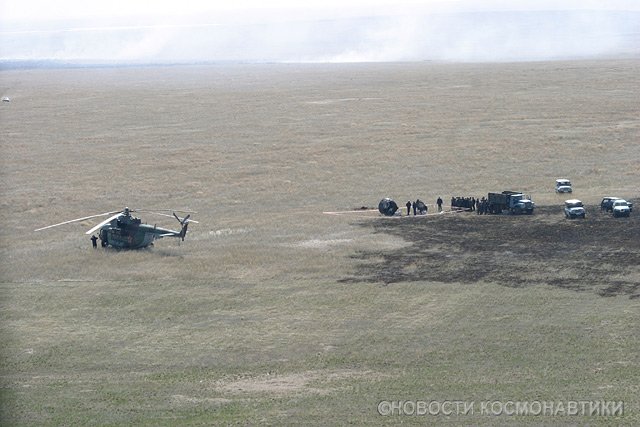|
|
Soyuz Landed 70km Away, Russia
|
Russia continued its territorial growth through the 17th century, which was the age of Cossacks. Cossacks were warriors organized into military communities, resembling pirates and pioneers of the New World. In 1648, the peasants of Ukraine joined the Zaporozhian Cossacks in rebellion against Poland-Lithuania during the Khmelnytsky Uprising, because of the social and religious oppression they suffered under Polish rule. In 1654 the Ukrainian leader, Bohdan Khmelnytsky, offered to place Ukraine under the protection of the Russian Tsar, Aleksey I. Aleksey's acceptance of this offer led to another Russo-Polish War (1654–1667). Finally, Ukraine was split along the Dnieper River, leaving the western part (or Right-bank Ukraine) under Polish rule and eastern part (Left-bank Ukraine and Kiev) under Russian. Later, in 1670–71 the Don Cossacks led by Stenka Razin initiated a major uprising in the Volga region, but the Tsar's troops were successful in defeating the rebels.
In the east, the rapid Russian exploration and colonisation of the huge territories of Siberia was led mostly by Cossacks hunting for valuable furs and ivory. Russian explorers pushed eastward primarily along the Siberian River Routes, and by the mid-17th century there were Russian settlements in Eastern Siberia, on the Chukchi Peninsula, along the Amur River, and on the Pacific coast. In 1648 the Bering Strait between Asia and North America was passed for the first time by Fedot Popov and Semyon Dezhnyov.
• Imperial Russia
Under Peter the Great, Russia was proclaimed an Empire in 1721 and became recognized as a world power. Ruling from 1682 to 1725, Peter defeated Sweden in the Great Northern War, forcing it to cede West Karelia and Ingria (two regions lost by Russia in the Time of Troubles), as well as Estland and Livland, securing Russia's access to the sea and sea trade. On the Baltic Sea Peter founded a new capital called Saint Petersburg, later known as Russia's Window to Europe. Peter the Great's reforms brought considerable Western European cultural influences to Russia.
|
|









